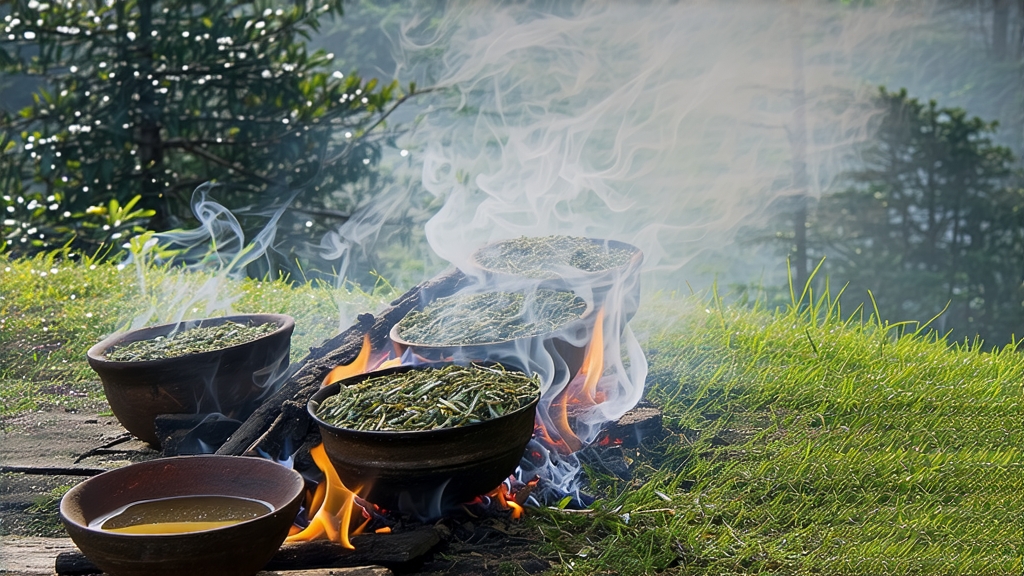
Ask most tea lovers to name China’s oldest black tea and they will answer “Lapsang Souchong.” Born in the cool, mineral-rich folds of the Wuyi massif, Fujian province, this leaf is celebrated not only for its campfire perfume but also for the simple fact that, without it, there would be no Keemun, no Assam, no Ceylon. In 1604 Dutch traders carried the first chests of “bohea” (the early romanisation of “Wuyi”) across the South China Sea to Amsterdam; Europeans, accustomed only to green teas, called the russet liquor “black tea,” and the label stuck. From that moment forward the world’s tea vocabulary was rewritten, and Lapsang Souchong—literally “small sort from Lapu mountain”—stood at the epicentre of a global commodity revolution.
Yet the tea that seduced Rembrandt’s contemporaries is not the smoked-sweet version most modern drinkers recognise. The original Song-style leaf, called “unsmoked” or zhengshan xiaozhong, was dried above gentle embers of local Masson pine, absorbing only a whisper of resin. Pine smoke was a preservative, not a flavouring, invented so that cool, humid mountain air would not re-moisten the leaves on the long trek to the port of Quanzhou. When Victorian England clamoured for stronger tastes, exporters doubled the smoking time, creating the assertive “Russian caravan” profile that still dominates export grades. Today the two lineages coexist: the subtle, honey-fragrant zhengshan prized in Beijing’s gongfu salons, and the tar-black, tarry-sweet lapsang found in every Western gourmet catalogue.
Geography is the first secret. Only leaves picked within the 600–1,200 m core of Tongmu Guan, a protected national park threaded by the Jiuqu (“Nine Bends”) stream, may legally claim the name zhengshan. Here, morning mist lingers until noon, diffusing sunlight into a soft, silver glow that forces the tea bush to synthesise extra amino acids and sugars. The soil is a gritty, volcanic conglomerate that drains instantly yet holds warmth, stressing the roots and concentrating flavour. Because pesticides are forbidden inside the reserve, farmers plant sweet-scented herbs—wild mint, cassia, and ginger lilies—between the rows to confuse leaf-eating insects, adding an almost imperceptible floral note to the finished tea.
Plucking follows lunar, not market, calendars. The sweetest lots are gathered on the first two sunny days after Qingming, when the standard is one tender bud plus two unfurling leaves, no longer than 2.5 cm. Experienced pickers pinch, never pull, rotating the wrist so the stem fractures cleanly and the tiny “fish-tail” point on the second leaf remains intact. A full kilogramme of fresh leaf contains roughly 11,000 such shoots; after withering, rolling, fermentation and drying, that same kilogramme collapses into just 220 g of finished tea.
Withering is still done the seventeenth-century way. The leaves are spread three centimetres deep on large bamboo trays suspended in the loft of the three-hundred-year-old “qing” building. Below, a shallow trench of pine emps smoulders at 28 °C, raising humidity rather than lowering it, so the cell walls relax slowly without oxidising too soon. Every twenty minutes the tea master climbs the rickety ladder, slides his fingertips beneath the pile, and lifts—if the leaves feel like warm silk and smell of ripe apricots, the first phase is complete.
Next comes rolling, but not the violent kneading used for Assam CTC. A 7 kg batch is placed on a 60 cm diameter rattan tray; two barefoot artisans rock back and forth, their weight compressing and releasing the leaf in a gentle sea-saw motion. After forty minutes the cells are bruised just enough to release enzymes; the pile is already turning copper at the edges. Fermentation follows in cedar-lined boxes kept at 24 °C and 85 % humidity. Here the magic of theaflavin formation occurs: catechins polymerise into golden-red pigments that give Lapsang its trademark brisk, malty cup. The tea master gauges readiness not by clock but by nose—when the fruity top note softens into dried longan and the underside smells faintly of raw cacao, he calls